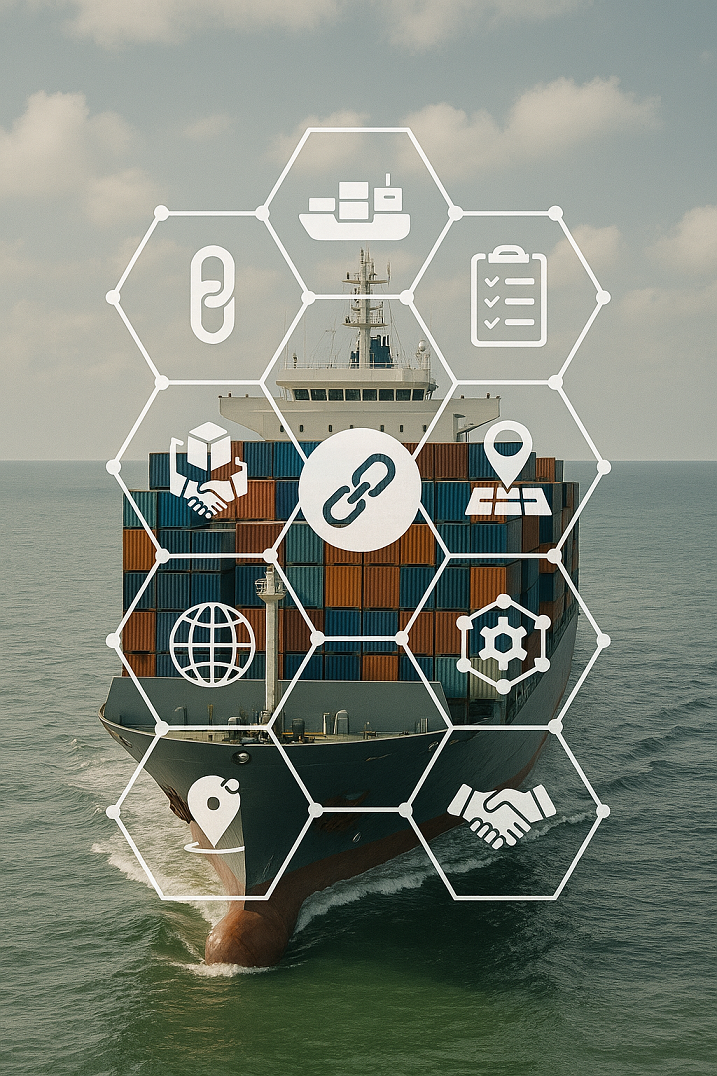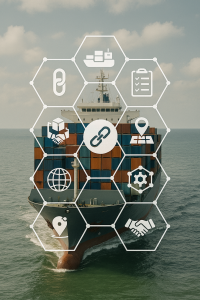Discover the top 10 blockchain applications revolutionizing maritime logistics. Learn how this decentralized technology is enhancing transparency, security, and efficiency across global shipping networks.
Why Blockchain Matters in Modern Maritime Operations
Maritime logistics is the backbone of global trade, facilitating over 80% of world commerce by volume. Yet, behind the flow of containers and cargo lies a labyrinth of paperwork, fragmented communication, and delayed verification processes. This complexity breeds inefficiency—and, too often, fraud.
Enter blockchain technology, a decentralized ledger system capable of transforming maritime operations by enabling secure, transparent, and tamper-proof recordkeeping. In a sector where documents like bills of lading, customs declarations, and port clearances are vital, blockchain offers a single source of truth for all stakeholders.
With smart contracts, real-time cargo tracking, and digitized documentation, blockchain is no longer a buzzword. It’s rapidly becoming a practical tool for enhancing operational efficiency, reducing delays, and ensuring regulatory compliance.
In this article, we examine the top 10 blockchain applications in maritime logistics, exploring real-world case studies, emerging technologies, and their strategic implications for shipping professionals.
1. Electronic Bill of Lading (eB/L)
Traditionally, the bill of lading is a paper-based document passed between banks, shipping lines, and consignees—leading to delays and risk of loss or fraud. Blockchain-based eB/L platforms ensure:
-
Immutable documentation
-
Instant transfer of ownership
-
Fraud prevention and paperless trade
Real-World Example:
TradeLens, a now-retired platform from IBM and Maersk, demonstrated the viability of blockchain-based eB/L by reducing document transit time from 7 days to a few minutes.
Ongoing Platforms:
-
CargoX: Used by the Government of Egypt for import documentation
2. Smart Contracts for Freight Agreements
Smart contracts are self-executing agreements coded on the blockchain. In maritime logistics, they automate:
-
Charter party terms
-
Freight and demurrage payments
-
Equipment leasing
-
Port fee disbursement
How It Works: Once conditions are met (e.g., cargo is discharged at port), the smart contract automatically triggers payment without intermediaries.
Benefit: Reduces disputes, accelerates cash flow, and eliminates human error in contract execution.
3. End-to-End Supply Chain Visibility
Blockchain provides a shared, real-time record of cargo movement across shipping lines, freight forwarders, ports, and customs. This improves:
-
Inventory management
-
ETA prediction
-
Dispute resolution
Case Study:
Mediterranean Shipping Company (MSC) integrated blockchain with IoT to offer live visibility from origin to destination, reducing insurance claims and optimizing asset usage.
4. Customs and Trade Compliance
Customs authorities often deal with siloed data and duplicated documentation. Blockchain enables secure, verified sharing of:
-
Certificates of origin
-
Health and safety declarations
-
Tariff and excise documentation
Example: Singapore Customs and IBM ran a blockchain pilot to streamline documentation for imports, reducing delays and minimizing human error.
Global Trade Digitalization (GTD) initiatives now aim to create blockchain consortia for intergovernmental cooperation.
5. Crew Certification and Training Records
Blockchain ensures that seafarer certificates, training records, and licenses are:
-
Easily verified by port state control
-
Tamper-proof and instantly accessible
-
Linked to biometric identity systems
Benefit: Reduces administrative bottlenecks and prevents fraudulent qualifications, enhancing onboard safety and compliance with STCW and MLC requirements.
6. Port and Terminal Operations Optimization
Blockchain-based port community systems allow seamless communication between:
-
Terminal operators
-
Stevedores
-
Shipping lines
-
Port authorities
Applications Include:
-
Slot booking verification
-
Automated vessel clearance
-
Container reconciliation
Example: The Port of Rotterdam is testing blockchain to enhance real-time coordination between inland barges and terminal operations, reducing waiting time by 20%.
7. Ship Maintenance and Lifecycle Tracking
A blockchain ledger can store detailed service history, survey results, and equipment logs from shipyards to shipowners and classification societies.
Advantages:
-
Increases vessel resale value
-
Prevents underreporting of defects
-
Improves transparency during audits or inspections
DNV is working on integrating blockchain-based digital twins with classification data for lifecycle vessel management.
8. Marine Insurance and Claims Management
Insurance claims in shipping are notoriously complex. Blockchain simplifies this by:
-
Automating policy enforcement
-
Validating incidents via sensor data
-
Triggering claims based on real-time conditions
Example: The Insurwave platform, developed by EY and Maersk, uses blockchain to manage risk and insurance for over 1,000 vessels.
Result: Reduced claims processing time by 40%, and improved trust between underwriters and shipowners.
9. Fuel Bunkering and Emissions Auditing
Fuel bunkering is vulnerable to quantity and quality disputes. Blockchain ensures:
-
Verified fuel volumes
-
Real-time emissions tracking
-
Secure carbon credit accounting
Emerging Use Case: Blockchain-powered carbon accounting supports compliance with IMO’s Carbon Intensity Indicator (CII) and FuelEU Maritime regulations.
Example: BunkerTrace combines blockchain with synthetic DNA to authenticate bunker fuel deliveries.
10. Decarbonization and ESG Reporting
Keywords: blockchain ESG shipping, green shipping transparency
Investors and regulators increasingly require proof of ESG (Environmental, Social, Governance) compliance. Blockchain enables:
-
Secure sustainability reporting
-
Carbon credit verification
-
Emission reduction validation
Future Vision: Green corridors and carbon-neutral supply chains will likely rely on tokenized emissions data stored and audited via blockchain.
–
FAQ: Blockchain in Maritime Logistics
Q1: Is blockchain already used in live shipping operations?
A: Yes. Platforms like CargoX, Insurwave, and WAVE BL are actively used by carriers, freight forwarders, and customs agencies globally.
Q2: Does blockchain require every stakeholder to use the same system?
A: Not necessarily. Through APIs and smart contracts, different systems can interact with shared ledgers, provided they follow common standards.
Q3: How does blockchain prevent document fraud?
A: Once a document is added to the blockchain, it cannot be altered without consensus—ensuring authenticity and traceability.
Q4: What are the barriers to adoption?
A: Integration cost, lack of regulatory clarity, and reluctance to share data across competitors are key hurdles.
Q5: What role do regulators play?
A: Bodies like IMO, WCO, and UNCTAD are actively exploring frameworks for legal recognition of blockchain-powered documentation and smart contracts.
Conclusion
Blockchain is reshaping maritime logistics by offering something the industry has long needed: trust without intermediaries. Whether it’s securing documents, automating contracts, or verifying emissions, this decentralized technology offers a more transparent, efficient, and secure way to move goods across oceans.
While adoption is still evolving, the top 10 applications covered here highlight blockchain’s real and growing impact—from port operations to global trade compliance. For maritime professionals, students, and shipping companies, now is the time to understand, explore, and prepare for a blockchain-enhanced future.
Call to Action: Want to explore blockchain training, toolkits, and case studies for your fleet or logistics network? Visit our Maritime Blockchain Learning Center.
References
-
International Maritime Organization. (2023). Digitalization and Emerging Technologies. https://www.imo.org
-
World Economic Forum. (2022). Blockchain and Trade Facilitation. https://www.weforum.org
-
IBM and Maersk. (2021). TradeLens Overview. https://www.tradelens.com
-
DNV. (2023). Digital Twin and Blockchain Integration. https://www.dnv.com
-
EY Global. (2022). Insurwave Case Study. https://www.ey.com


